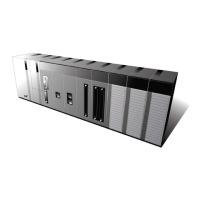Appendix
A-5
17. IP Address
Address of respective computers on the Internet made of figures binary of 32 bits (4 bytes) to
distinguish the applicable machine on the Internet. Classified into 2 sections, network
distinguishing address and host distinguishing address. The network address and the host
address is respectively divided into class A, B and C based on the bits allotted. IP address since
it shall be unique all over the world, shall be decided not optionally but as assigned by
NIC(Network Information Center) of the applicable district when joining the Internet. In Korea,
KRNIC(Korea Network Information Center) is in charge of this work. Ex.) 165.244.149.190
18. ISO (International Organization for Standardization)
A subsidiary organization of UN, establishing and managing the international standards.
19. LAN (Local Area Network)
Called also as local area communication network or district information communication network,
which allows lots of computers to exchange data with each other as connected though
communication cable within a limited area such as in an office or a building
20. MAC (Medium Access Control)
A method used to decide which device should use the network during given time on the
broadcast network
21. Node
Each computer connected with the network is called Node
22. Packet
A package of data which is the basic unit used to send through the network. Usually the package
is made of several tens or hundreds of bytes with the header attached in front to which its
destination and other necessary information are added
23. PORT number
Used to classify the applications on TCP/UDP.
Ex.) 21/tcp : Telet
24. PPP (Point-to-Point Protocol)
Phone communication protocol which allows packet transmission in connecting with the Internet.
In other words, normal phone cable and modem can be used for the computer to connect
through TCP/IP with this most general Internet protocol.
Similar to SLIP, however with modern communication protocol factors such as error detection
and data compression, it demonstrates more excellent performance than SLIP.
25. Protocol
Contains regulations related with mutual information transmission method between computers
connected with each other through the network. The protocol may specify detailed interface
between machines in Low level (for example, which bit/byte should go out through the line) or
high level of message exchange regulations as files are transferred through the Internet.
26. Router
A device used to transfer the data packet between the networks. It sends the data packet to its
final destination, waits if the network is congested, or decides which LAN is good to connect to at
the LAN junction. Namely, it is a special computer/software used to control the two or more
networks connected.

